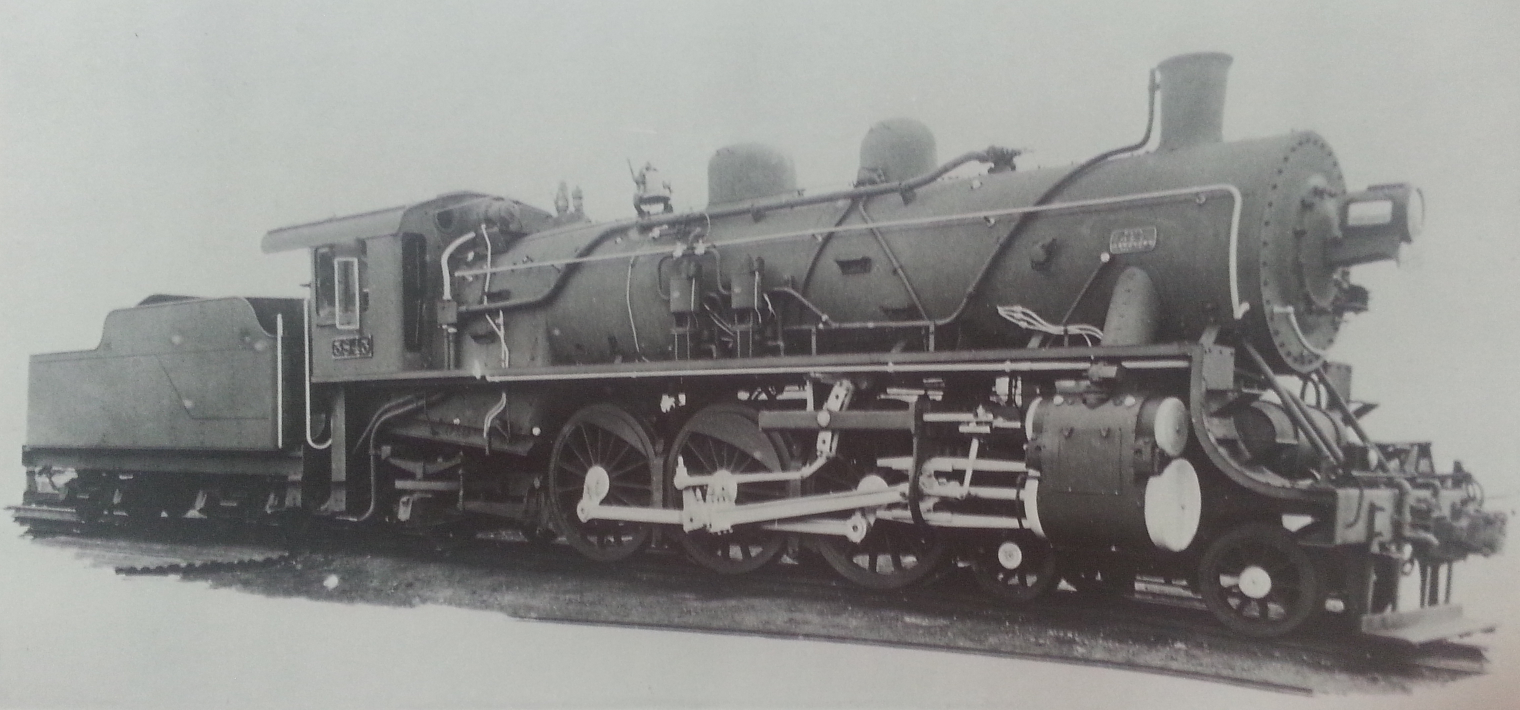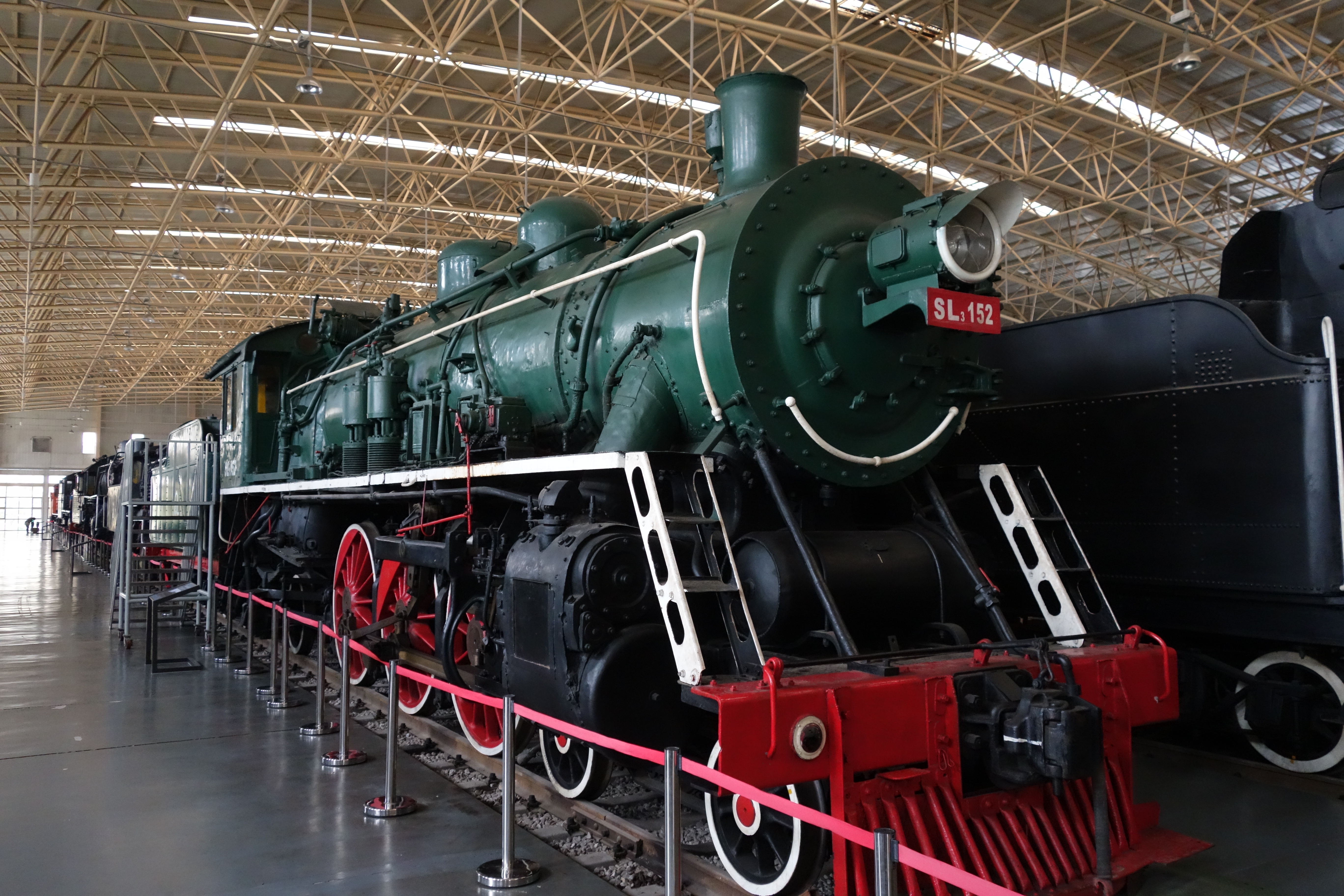China Railways SL3 on:
[Wikipedia]
[Google]
[Amazon]
The China Railways SL3 (勝利3, ''Shènglì'', "victory") class steam locomotive was a class of

 After the Chosen Government Railway Bureau entrusted the management of the North Chosen Line between
After the Chosen Government Railway Bureau entrusted the management of the North Chosen Line between
 The thirty Pashisa-class locomotives belonging to the Manchukuo National were assigned to the Fengtian (1), the
The thirty Pashisa-class locomotives belonging to the Manchukuo National were assigned to the Fengtian (1), the
4-6-2
Under the Whyte notation for the classification of steam locomotives, represents the wheel arrangement of four leading wheels on two axles, six powered and coupled driving wheels on three axles and two trailing wheels on one axle. The locomotiv ...
passenger steam locomotives operated by the China Railway
China State Railway Group Company, Ltd., doing business as China Railway (CR), is the national passenger and freight railroad corporation of the People's Republic of China.
China Railway operates passenger and freight transport throughout Ch ...
. They were originally built for the South Manchuria Railway
The South Manchuria Railway ( ja, 南満州鉄道, translit=Minamimanshū Tetsudō; ), officially , Mantetsu ( ja, 満鉄, translit=Mantetsu) or Mantie () for short, was a large of the Empire of Japan whose primary function was the operatio ...
, the Manchukuo National Railway
The Manchukuo National Railway (Traditional Chinese and Japanese kanji: , Japanese romanization: ''Manshū Kokuyū Tetsudō'') was the state-owned national railway company of Manchukuo. Generally called the "國線" ("National Line", ''Kokusen' ...
and the North China Transportation Company by several Japan
Japan ( ja, 日本, or , and formally , ''Nihonkoku'') is an island country in East Asia. It is situated in the northwest Pacific Ocean, and is bordered on the west by the Sea of Japan, while extending from the Sea of Okhotsk in the north ...
ese manufacturers between 1934 and 1940. They were designed in 1933 based on the design of the first Pashisa class locomotives (later reclassified Pashishi class); the first order was placed by Mantetsu in March of that year.Ichihara, Yoshizumi, 写真集南満洲鉄道 (South Manchuria Railway Photo Collection) pp. 117-118, 138, 1998 Seibundo Shinkosha Publishing Co. Ltd. (in Japanese)
History

 After the Chosen Government Railway Bureau entrusted the management of the North Chosen Line between
After the Chosen Government Railway Bureau entrusted the management of the North Chosen Line between Cheongjin
Chŏngjin (; ) is the capital of North Korea's North Hamgyong Province (함경북도) and the country's third largest city. It is sometimes called the ''City of Iron''.
History
Prehistory
According to archaeological findings near the lower ...
and Unggi
Sonbong County, formerly called Unggi (Chosŏn'gŭl: 웅기, Hancha: 雄基), is a subdivision of the North Korean city of Rason. It is located at the northeastern extreme of North Korea, bordering Russia and China. It lies on Unggi Bay, an extensi ...
in Korea to the South Manchuria Railway (''Mantetsu''), Mantetsu ordered sixteen of these locomotives, which were built in 1934 and 1935 by Hitachi
() is a Japanese multinational corporation, multinational Conglomerate (company), conglomerate corporation headquartered in Chiyoda, Tokyo, Japan. It is the parent company of the Hitachi Group (''Hitachi Gurūpu'') and had formed part of the Ni ...
and Kisha Seizō of Japan. These were designated Pashisa (パシサ) class, after the previous class of locomotives with that designation were reclassified Pashiha class in 1933. Care was taken during the design process to maximise the commonality of parts between these engines and those of the MNR Mikaro, Mantetsu Mikasa and Mantetsu Mikaro class freight locomotives.
The Mantetsu Pashisa class was identical to the Manchukuo National's Pashishi (パシシ) class, which were built to use lignite
Lignite, often referred to as brown coal, is a soft, brown, combustible, sedimentary rock formed from naturally compressed peat. It has a carbon content around 25–35%, and is considered the lowest rank of coal due to its relatively low heat ...
fuel. The first ten of these were built by Hitachi in 1934, these were called the "National Small Pashi" (國小パシ). After the acquisition of the Chinese Eastern Railway
The Chinese Eastern Railway or CER (, russian: Китайско-Восточная железная дорога, or , ''Kitaysko-Vostochnaya Zheleznaya Doroga'' or ''KVZhD''), is the historical name for a railway system in Northeast China (als ...
in March 1935 and the conversion of its mainline from Harbin to Xinjing from Russian gauge to standard gauge, they were used to pull express trains, including the Asia Express
The ''Asia Express'' ( ja, アジア号, translit=Ajia-gō, ) was a super express passenger train operated by the South Manchuria Railway (''Mantetsu'') from 1934 until 1943. This limited express, which began operation in November 1934 and was M ...
, on that section. At the end of 1935, when the emperor of Manchukuo
Manchukuo, officially the State of Manchuria prior to 1934 and the Empire of (Great) Manchuria after 1934, was a puppet state of the Empire of Japan in Northeast China, Manchuria from 1932 until 1945. It was founded as a republic in 1932 afte ...
, Puyi
Aisin-Gioro Puyi (; 7 February 1906 – 17 October 1967), courtesy name Yaozhi (曜之), was the last emperor of China as the eleventh and final Qing dynasty monarch. He became emperor at the age of two in 1908, but was forced to abdicate on 1 ...
, visited Harbin for the first time, his train was hauled by one of these locomotives.
The firegrate on the MNR Pashishis proved to be too small and so were increased by , and at the same time, the firebox area was also enlarged by . This new design, dubbed "New National Small Pashi" (新國小パシ), were heavier than the National Small Pashi, and twenty were built for the Manchukuo National in 1936 by Hitachi and Kisha Seizō.
In the unified classification scheme of 1938, the Mantetsu Pashisa and Manchukuo National Pashishi classes were combined as the Pashisa class.
Twenty were built by Hitachi in 1939 for North China Transport, numbered 1501 through 1520, followed by another 30 in 1939–1940 from Kisha Seizō, numbered 1521 through 1550.
Postwar
China Railways SL3 (勝利3)
Jilin
Jilin (; alternately romanized as Kirin or Chilin) is one of the three provinces of Northeast China. Its capital and largest city is Changchun. Jilin borders North Korea (Rasŏn, North Hamgyong, Ryanggang and Chagang) and Russia (Prim ...
(5), the Mudanjiang
Mudanjiang (; Manchu
The Manchus (; ) are a Tungusic East Asian ethnic group native to Manchuria in Northeast Asia. They are an officially recognized ethnic minority in China and the people from whom Manchuria derives its name. The Later ...
(7), and the Qiqihar
Qiqihar () is the second-largest city in the Heilongjiang province of China, in the west central part of the province. The built-up (or metro) area made up of Longsha, Tiefeng and Jianhua districts had 959,787 inhabitants, while the total populat ...
Railway Bureaus (11), and six were out on loan to other railways. These, along with the thirty belonging to North China Transport, were taken over by the Republic of China Railway. In 1951, they were classified class ㄆㄒ三 (PX3) by the China Railway, becoming class SL3 (勝利, ''Shènglì'', "victory") in 1959; they were initially numbered in the 101–270 range (other sources say 101–188). In 1980, twelve locomotives with numbers ranging from 114 to 264 were seen in service around China, including in Shanghai, Beijing, Zhengzhou and Guangzhou. SL3 152 is preserved at the China Railway Museum
The China Railway Museum () is a Chinese museum preserving locomotives that have operated on the railways of the People's Republic of China. The museum offers a total exhibition space of 16500m² and 8 exhibition tracks.
The museum is located ...
in Beijing.
Korean State Railway 바시서 (Pasisŏ) class
At the end of the Pacific War, all of Mantetsu's Pashisa-class locomotives were in northern Korea: eleven were assigned to the Rajin Railway Burea for operations on Mantetsu's North Chosen Line, whilst the remaining five were out on loan to theChosen Government Railway
Chosen or The Chosen may refer to:
The chosen ones
*Chosen people, people who believe they have been chosen by a higher power to do a certain thing including
**Jews as the chosen people
Books
*The Chosen (Potok novel), ''The Chosen'' (Potok novel ...
(''Sentetsu''). These were taken over by the Korean State Railway
The Korean State Railway (), commonly called the State Rail () is the operating arm of the Ministry of Railways of North Korea and has its headquarters at P'yŏngyang. The current Minister of Railways is Chang Jun Song.
History
1945–195 ...
in North Korea
North Korea, officially the Democratic People's Republic of Korea (DPRK), is a country in East Asia. It constitutes the northern half of the Korea, Korean Peninsula and shares borders with China and Russia to the north, at the Yalu River, Y ...
, where they were designated 바시서 (''Pasisŏ'') class (not to be confused with the Pashisa-class inherited from Sentetsu). Little is known about their service lives in North Korea, but they were likely retired by the late 1960s.
Class Specifications
References
{{DPRKloco 4-6-2 locomotives Hitachi locomotives Kisha Seizo locomotives Railway locomotives introduced in 1934 Steam locomotives of China Standard gauge locomotives of China Rolling stock of Manchukuo Locomotives of Korea under Japanese rule Locomotives of North Korea Passenger locomotives